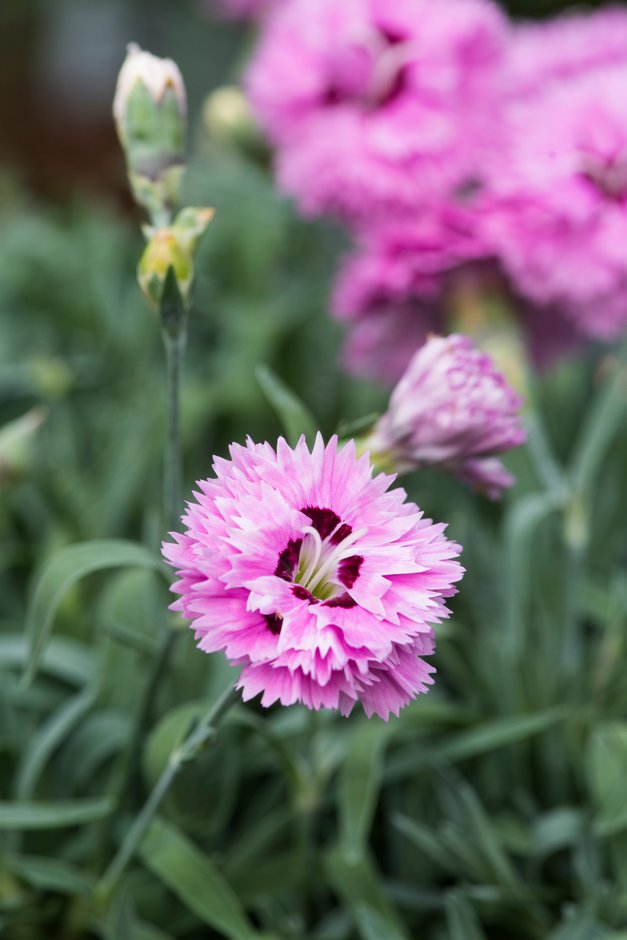Dianthus Cracker ('Wp10 Sab06'PBR) (Early Bird Series) (p)
pink [Cracker]
A compact, evergreen perennial forming a low mound of narrow, grey-green leaves. Lightly-scented, orange-red double flowers are borne on erect stems to 15cm high from early summer
Size
Ultimate height
0.1–0.5 metresTime to ultimate height
2–5 yearsUltimate spread
0.1–0.5 metresGrowing conditions
Moisture
Well–drainedpH
Alkaline, NeutralColour & scent
| Stem | Flower | Foliage | Fruit | |
| Spring | Green Grey Silver | |||
|---|---|---|---|---|
| Summer | Orange Red | Green Grey Silver | ||
| Autumn | Green Grey Silver | |||
| Winter | Green Grey Silver |
Position
- Full sun
Aspect
South–facing or West–facing or East–facing
Exposure
Exposed or Sheltered Hardiness
H6Botanical details
- Family
- Caryophyllaceae
- Native to GB / Ireland
- No
- Foliage
- Evergreen
- Habit
- Bushy
- Potentially harmful
- Humans/Pets: Skin allergen, wear gloves and other protective equipment when handling. For further information and contact numbers regarding pets, see the HTA guide to potentially harmful plants
- Genus
Dianthus can be annuals, evergreen perennials or subshrubs with narrow, often greyish leaves and showy flowers that are frequently fragrant
- Name status
Trade
- Horticultural Group
- Pinks are hardy, evergreen perennials which make compact mounds or mats of usually greyish leaves, with up to six, usually fragrant, single or double, medium-sized flowers per stem in early and mid-summer
How to grow
Cultivation
Grow in a well-drained, neutral to alkaline soil in full sun. Prefers a soil enriched with well-rotted manure or garden compost and an application of a balanced fertiliser in spring. This cultivar will start flowering early in a mild spring
Propagation
Propagate by softwood cuttings of non-flowering shoots in summer
Suggested planting locations and garden types
- Coastal
- Patio and container plants
- Cottage and informal garden
- Gravel garden
- Cut flowers
- Flower borders and beds
- Banks and slopes
- Garden edging
Pruning
Deadhead regularly to prolong flowering
Pests
Diseases
May be susceptible to powdery mildews, a rust, a virus and fusarium wilt
Get involved
The RHS is the UK’s gardening charity, helping people and plants to grow - nurturing a healthier, happier world, one person and one plant at a time.
